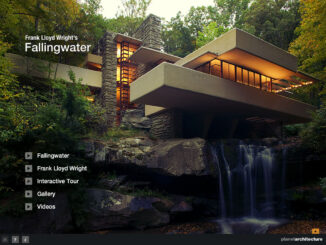
The evolving technology of green roofs has been leading to the use of greater diversity in their designs. After years of implementing green roof designs, the industry has seen a steady move towards more diversity in both elements of construction and plant materials. What is most fascinating of the improvement in green roof design is the use of plants on these roofs which, along with other naturally decomposing materials, aid in greater biodiversity. No longer are sedums the only plants that are being used on green roofs.

At the EcoBuild Conference in London 2010, exhibits featured new green roof designs showing a greater use of ornamental grasses and other flowering plants including some bulbs. The exhibitors even hinted at the use of materials that compose brown roofs. A brown roof is comprised of loose material as in crushed concrete or woody debris. This material can be combined with some self-seeding plants or left for nature to care for; however, the belief is that brown roofs will colonize spontaneously and will also provide habitat for several local species (i.e., bats, birds) as well as migrating species.
In the Greater Manchester area of England, there is a proactive movement to add a number of green roofs each year to new and existing projects. In Mark Wilding’s 14 August 2009 article on the Planning Resource website, he quotes a member of the Manchester executive member for the environment– Richard Cowell as saying: “Green roofs are part of our plan to create a well-adapted, successful and competitive city.” The Greater Manchester Biodiversity Action Plan has selected a range of habitats and species they want to conserve. These new projects are so diverse they can help to support a large population of invertebrates including bees, wasps, and spiders.

In addition, we see a growing interest in living walls. Living walls! What are they? They are walls of plants that can be free standing, attached to a building or built on a structure. According to Gary Grant, Director of Ecology at AECOM Design + Partners, living walls come in many varieties. There are self-established walls, moss gardens/mat, climbers, and those derived through other technologies, such as hydroponics, modules, or cells. These walls provide many of the same benefits as a green roof would, in that they can help cool down an area, provide health benefits, and can aid in the reduction of heat and air-conditioning while creating greater habitat for birds and many invertebrates. Grant says that living walls can also assist with dust suppression, noise abatement, evaporative cooling, and shade provisions. In his lecture, Grant states that the thermal benefits of vegetation along walls can maintain a temperature of 30° Celsius (C) when a road or non-vegetated wall reaches a temperature of around 46° C.

Living walls are wonderful because they can be so diverse. As mentioned earlier, there are many types and we can grow a wide range of plants on them. Some, like self-established walls, are easy to maintain and relatively inexpensive. Take an ordinary rock wall and overtime, seeds will drop or land on it and take root. They can become quite thick with plants but they are slow to establish and may not do well in sunny, dry locations. They will, however, offer a great diversity of plants, if allowed. Climbers are limited to those plants that will climb exterior walls or wired structures, which limit the range of plants that can grow on them. With hydroponics, modules or cells exciting walls can be created that allow for plant diversity, unique designs, and creative arrangements. Although these systems are expensive, require irrigation systems and may require specialists to install and maintain, they can add a very attractive element in a design and can enhance indoor and outdoor spaces tremendously.

For example, the living wall located at the Westfield Shopping Mall in Sheppard’s Bush, London hides the unattractive and run down space behind it. The wall provides visual interest, aids in scaling the size of the mall to create a space for shoppers to sit or stroll along while having a pleasant and positive shopping experience. In an article by Paul Hensey on Green Screens as published in Garden Design Journal’s March 2010 issue, he states “the Greater London Area (GLA) has a policy on living roofs and green walls that “…requires major developments to incorporate living roofs and walls where feasible…”

Germany and Austria have been the leaders in green roofs for many decades now. In Linz, Austria, all new construction built after 1985 must have a green roof installed on it. The change has been remarkable. Green roofs and living walls are beneficial for our environment in reducing urban heat island conditions, reducing dust, cooling spaces, and habitat for several species in an urban. To keep the sustainable drainage systems (SuDs) program going, the UK needs to include more green roofs and living walls in new construction and in existing construction by offering subsidies and other fiscal incentives to local and regional government agencies. They need to continue to raise the public’s awareness to get the support of policymakers.





Be the first to comment